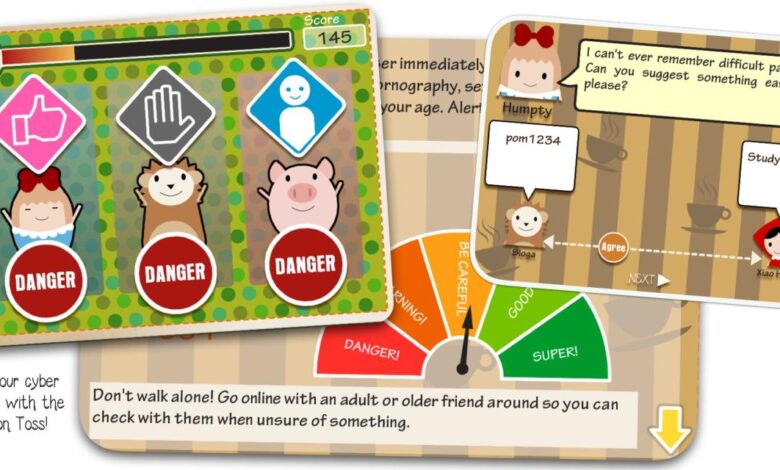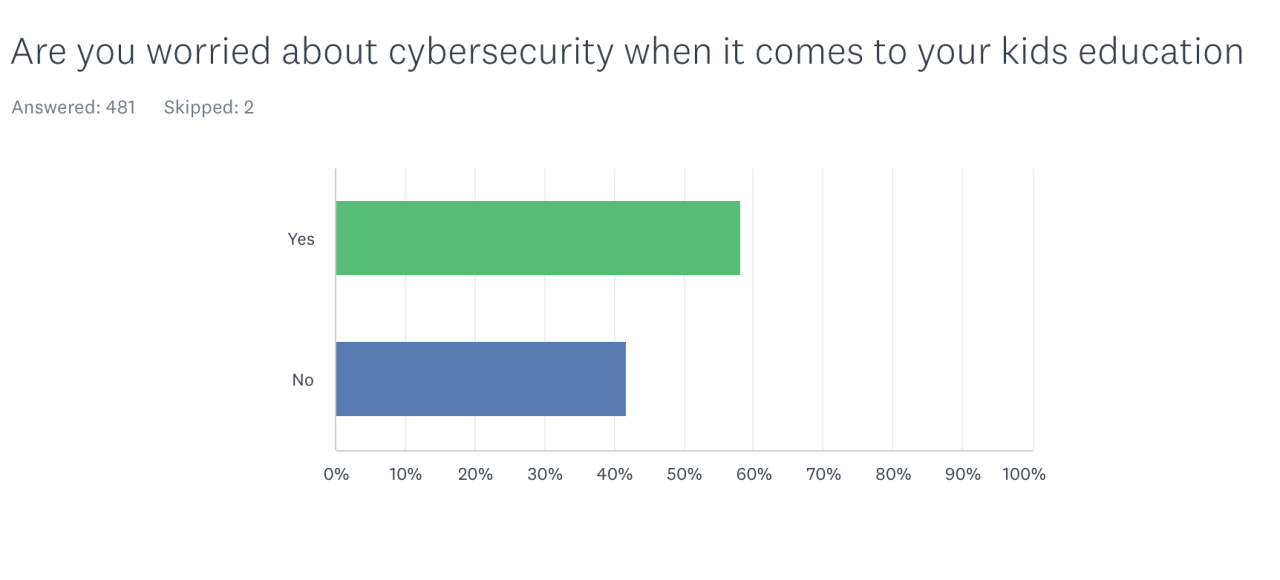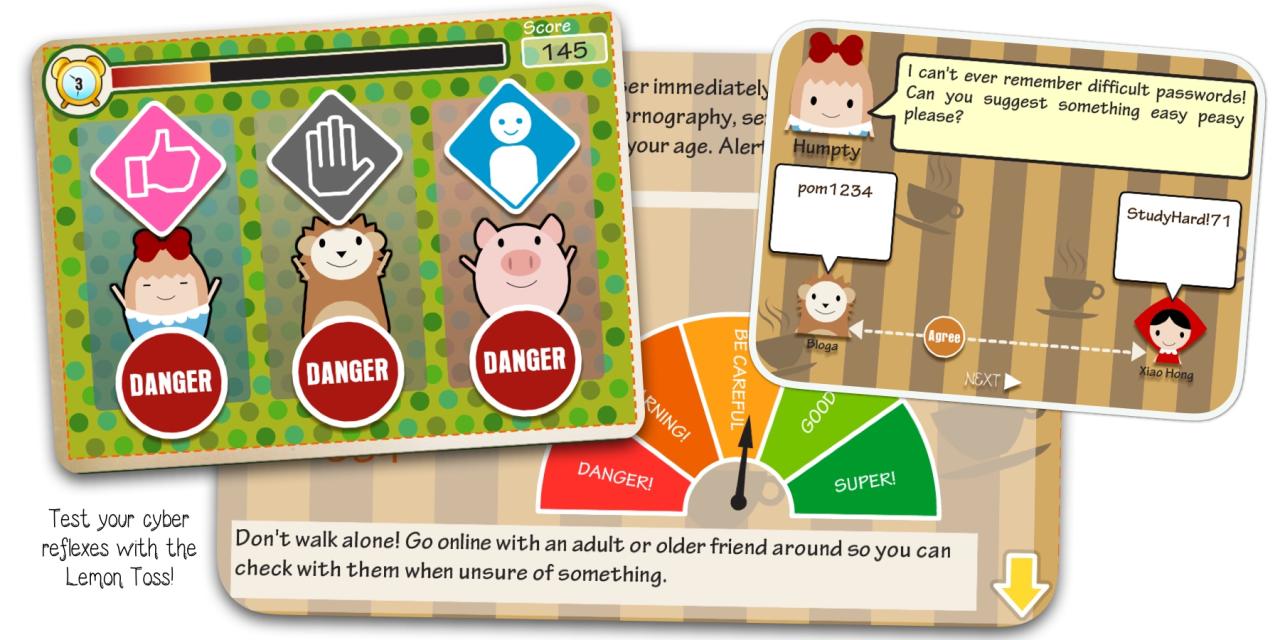
Cyber Threat to Childrens Toys and Baby Monitors Sold in Britain
Cyber threat to childrens toys and baby monitors sold in britain – Cyber threat to children’s toys and baby monitors sold in Britain is a chilling reality. We often trust these devices to soothe, entertain, and monitor our little ones, but what if those same devices become avenues for malicious actors? This isn’t some far-fetched sci-fi plot; it’s a growing concern demanding our attention. This post dives into the vulnerabilities, risks, and steps we can take to protect our children in an increasingly connected world.
From seemingly innocent smart toys to always-on baby monitors, the potential for data breaches and privacy violations is significant. We’ll explore the different types of threats, the methods used by attackers, and the legal and ethical implications of collecting and storing children’s data. We’ll also examine the responsibilities of manufacturers, the role of regulation, and what parents can do to safeguard their families.
Types of Cyber Threats

The increasing connectivity of children’s toys and baby monitors in Britain presents a significant cybersecurity risk. These devices, often lacking robust security features, are vulnerable to various attacks that can compromise children’s privacy and safety. Understanding the types of threats, the vulnerabilities they exploit, and the methods used by attackers is crucial for parents and manufacturers alike.
Common Cyber Threats Affecting Children’s Toys and Baby Monitors
Several cyber threats target children’s connected devices. These include malware infections, unauthorized access, data breaches, and denial-of-service attacks. Malware can be installed to spy on children, record audio and video, or even manipulate the device’s functionality. Unauthorized access can lead to remote control of the device, potentially exposing the child to inappropriate content or allowing attackers to eavesdrop on conversations.
Data breaches can expose sensitive personal information, including the child’s location, sleep patterns, or even conversations captured by the monitor. Denial-of-service attacks can render the device unusable, preventing parents from monitoring their child. The consequences of these attacks range from minor inconvenience to serious harm, highlighting the need for improved security measures.
Vulnerabilities Exploited in Children’s Connected Devices
Many vulnerabilities are inherent in the design and manufacturing of these devices. Weak or default passwords are common, allowing attackers easy access. Lack of encryption means data transmitted between the device and the parent’s smartphone or cloud service can be intercepted. Outdated or poorly implemented software can contain known security flaws that attackers can exploit. Insufficient input validation can allow attackers to inject malicious code into the device.
A lack of regular security updates leaves devices vulnerable to newly discovered exploits. These vulnerabilities often stem from a prioritization of low cost and ease of use over robust security.
Methods Used by Attackers to Compromise Devices
Attackers employ various methods to compromise these devices. They may exploit known vulnerabilities in the device’s software, using publicly available tools or creating their own custom exploits. They might try brute-forcing weak passwords, attempting numerous combinations until they gain access. Man-in-the-middle attacks intercept communication between the device and the cloud service, allowing them to steal data or inject malicious code.
The recent news about cyber threats targeting children’s toys and baby monitors sold in Britain is seriously unsettling. It highlights the urgent need for robust security measures, especially considering how much data these devices collect. Understanding cloud security is key, and learning more about solutions like bitglass and the rise of cloud security posture management could help manufacturers improve their security protocols.
Ultimately, protecting our kids online requires a multi-faceted approach, starting with better security from the outset.
Phishing attacks can trick parents into revealing their login credentials. Using readily available tools, attackers can scan networks for vulnerable devices and automatically attempt to compromise them. The ease of access to these methods makes these devices particularly attractive targets.
Comparison of Security Risks Across Different Device Types
Connected toys, such as interactive plush animals or smart dolls, generally pose a different risk profile compared to baby monitors. Toys often focus on data collection for marketing purposes, making them a potential source of sensitive child data. Baby monitors, on the other hand, present a more direct privacy risk due to their audio and video capabilities. However, both types of devices share vulnerabilities like weak passwords and outdated software, making them susceptible to similar attacks.
The specific security risks depend heavily on the device’s features, its software’s quality, and the manufacturer’s commitment to security updates.
Summary of Common Threats, Vulnerabilities, and Attack Methods
| Threat | Vulnerability | Attack Method | Example |
|---|---|---|---|
| Malware Infection | Outdated software, weak security | Exploiting software vulnerabilities | A malicious app installed through a compromised app store |
| Unauthorized Access | Default passwords, lack of encryption | Brute-force attacks, exploiting known vulnerabilities | An attacker gaining control of the device using a default password |
| Data Breach | Insufficient encryption, insecure cloud storage | Man-in-the-middle attacks, SQL injection | An attacker intercepting data transmitted between the device and the cloud |
| Denial-of-Service | Poorly designed network protocols | Flooding the device with requests | An attacker rendering the baby monitor unusable |
Data Breaches and Privacy Concerns

The increasing connectivity of children’s toys and baby monitors presents a significant risk: data breaches. These breaches can expose sensitive information about children, leading to serious consequences for families and raising significant ethical and legal questions. The sheer volume of data collected, combined with often inadequate security measures, creates a perfect storm for exploitation.The potential consequences of a data breach involving children’s data are far-reaching and deeply concerning.
Stolen data can be used for identity theft, blackmail, targeted advertising, or even more sinister purposes. The vulnerability of children, their inability to fully comprehend the risks, and the lasting impact of such breaches necessitate stringent data protection measures.
Legal and Ethical Implications of Children’s Data Collection
Collecting and storing children’s data carries substantial legal and ethical responsibilities. The UK’s data protection laws, such as the UK GDPR, impose strict rules on the collection, processing, and storage of personal data, especially that of children. These regulations require explicit consent from parents or guardians, robust security measures to protect the data, and limitations on the purposes for which the data can be used.
Ethically, the collection of children’s data should always be justified, proportionate, and necessary, prioritizing the child’s best interests above all else. Companies handling children’s data have a moral obligation to ensure its safety and prevent its misuse.
Examples of Past Data Breaches Involving Similar Devices
While specific breaches involving children’s toys and baby monitors are not always publicly disclosed due to non-disclosure agreements or lack of reporting, similar incidents involving internet-connected devices have highlighted the vulnerabilities. For instance, several smart home devices have experienced data breaches, revealing users’ personal information, including location data, conversations, and even video footage. These breaches underscore the need for improved security practices across the connected device industry, particularly those targeting children.
The potential for similar breaches in the children’s toy and baby monitor market is substantial.
Types of Data Collected and Potential Misuse
These devices often collect a surprising amount of data. This can include audio recordings (from baby monitors), location data (from GPS-enabled toys), images (from cameras embedded in toys), and even biometric data (from toys that track sleep patterns or activity levels). This data, if misused, could be used for identity theft, targeted harassment, stalking, or the creation of personalized profiles for manipulative advertising.
For example, audio recordings could be used to train voice recognition systems, location data to track a child’s movements, and images to build a profile of the child’s appearance and habits.
Hypothetical Data Breach Scenario
Imagine the Smith family. They purchased a smart baby monitor with a camera and two-way audio for their infant daughter, Lily. A data breach exposes Lily’s location data, sleep patterns recorded by the monitor, and audio recordings of her cries and her parents’ conversations. This data falls into the wrong hands. The family’s home address is easily identified through the location data, making them vulnerable to physical threats.
The audio recordings of Lily’s cries could be used to create a distressing montage for online harassment. The hackers could also potentially use the information to target the family with personalized phishing attempts or blackmail. The emotional distress and potential safety risks to the family are significant and long-lasting.
Manufacturer Responsibility and Regulation
The increasing connectivity of children’s toys and baby monitors presents a significant challenge, demanding a robust approach to data security from manufacturers and effective oversight from regulators. The responsibility for safeguarding children’s data lies primarily with the companies producing these devices, but the current regulatory landscape needs strengthening to ensure consistent and effective protection.Manufacturers have a moral and legal obligation to prioritize the security of their products.
This involves implementing robust security measures throughout the product lifecycle, from design and development to manufacturing and post-market surveillance. Failing to do so exposes children to potential risks, including data breaches, identity theft, and even physical harm if devices are compromised and used maliciously.
Existing Regulations and Standards
The UK lacks a single, comprehensive piece of legislation specifically addressing the cybersecurity of children’s toys and baby monitors. However, several existing regulations and standards indirectly apply. The General Data Protection Regulation (GDPR), while not toy-specific, sets a high bar for data protection and applies to any company processing personal data of EU residents, including children. The UK’s own Data Protection Act 2018 mirrors much of the GDPR.
Furthermore, product safety regulations, such as those enforced by the Office for Product Safety and Standards (OPSS), cover aspects that indirectly relate to security, such as the prevention of malfunction or hazards. However, these regulations often lack the specific focus on cybersecurity that is needed. The lack of specific cybersecurity standards tailored to these products leaves a significant gap in protection.
Comparison of Manufacturer Security Practices
A review of various manufacturers reveals a wide disparity in their security practices. Some leading brands invest heavily in security research and development, implementing robust encryption, secure software updates, and privacy-preserving data handling practices. They often undergo independent security audits and publicly disclose their security policies. Others, however, appear to lag behind, offering limited security features or failing to provide adequate software updates to address vulnerabilities.
This inconsistency highlights the need for stricter regulations and more transparent security reporting. For example, some manufacturers might use strong encryption for data transmission but lack robust authentication mechanisms, while others may prioritize user-friendly interfaces over robust security.
Effectiveness of Current Regulations
The current regulatory framework, relying on a patchwork of existing legislation, proves inadequate in fully protecting children’s data from threats posed by connected toys and baby monitors. The GDPR and Data Protection Act 2018 provide a strong foundation for data protection, but their enforcement and application specifically to the nuances of IoT devices aimed at children need improvement. The lack of specific standards and testing protocols for cybersecurity in these products allows manufacturers with weak security practices to operate without sufficient accountability.
This results in a market where the security of children’s data varies wildly depending on the manufacturer.
Recommendations for Improvement
To improve manufacturer responsibility and regulatory oversight, several recommendations are crucial:
The following points highlight key areas for improvement:
- Mandatory Security Standards: Introduce specific cybersecurity standards and testing protocols for children’s toys and baby monitors, covering aspects such as data encryption, secure software updates, and access control.
- Increased Transparency: Require manufacturers to publicly disclose their security policies and undergo independent security audits, the results of which should be made publicly available.
- Strengthened Enforcement: Enhance the enforcement of existing data protection regulations and newly introduced cybersecurity standards, with significant penalties for non-compliance.
- Improved Consumer Education: Develop public awareness campaigns to educate parents and caregivers about the cybersecurity risks associated with connected toys and baby monitors and how to mitigate them.
- Dedicated Regulatory Body: Consider establishing a dedicated regulatory body specifically focused on the cybersecurity of connected toys and other IoT devices aimed at children.
Consumer Awareness and Protection
The increasing connectivity of children’s toys and baby monitors presents a significant challenge for parents and caregivers. Understanding the potential risks and implementing proactive security measures is crucial to protecting children’s privacy and safety in the digital age. This section focuses on empowering consumers with the knowledge and tools to navigate this complex landscape effectively.Educating consumers about the potential cyber threats associated with connected toys and baby monitors requires a multi-pronged approach.
This involves raising awareness about data breaches, hacking vulnerabilities, and the potential for malicious actors to access sensitive information. Clear and accessible information, presented in a non-technical way, is vital to reaching a broad audience.
Strategies for Consumer Education
Effective consumer education campaigns should leverage various channels, including government websites, parenting magazines, social media platforms, and collaborations with consumer protection organizations. Educational materials should highlight real-world examples of data breaches involving connected toys, illustrating the potential consequences for children. For instance, a campaign might showcase a case where a hacker accessed a baby monitor’s feed, causing distress to the family.
Simple infographics and videos can also be powerful tools for conveying complex information in an easily digestible format. Regular public service announcements (PSAs) on television and radio could reinforce key safety messages.
Securing Connected Toys and Baby Monitors
Protecting children’s data requires a proactive approach. Parents should change default passwords on all connected devices immediately upon purchase. Strong, unique passwords should be used, and devices should be regularly updated with the latest security patches. Many connected toys and baby monitors have features that allow for parental control over data collection and sharing; these settings should be carefully reviewed and adjusted to minimize data exposure.
The recent news about cyber threats targeting children’s toys and baby monitors sold in Britain is seriously unsettling. It makes you wonder about the security of the software in these devices, and how much better things could be if developers used more secure, robust platforms. Learning about the potential of domino app dev the low code and pro code future for creating safer applications gives me some hope.
Perhaps this technology could help manufacturers build more secure products, protecting our little ones from online dangers. The need for secure coding in these everyday items is undeniably crucial.
Parents should also be wary of apps associated with these devices, ensuring that they are downloaded from reputable app stores and that permissions are carefully considered. Network security is also crucial; using a strong Wi-Fi password and regularly updating the router’s firmware can help prevent unauthorized access.
Reporting Security Vulnerabilities and Data Breaches
Consumers should know where to report security vulnerabilities and data breaches. The Information Commissioner’s Office (ICO) in the UK is the primary authority for data protection complaints. Their website provides clear guidance on reporting data breaches and offers support for individuals affected by such incidents. In addition, reporting vulnerabilities directly to the manufacturer can allow them to address the issue before it affects a wider audience.
Many manufacturers have dedicated security teams or contact points for reporting such concerns. Consumers should also consider reporting incidents to relevant consumer protection organizations and the police, depending on the severity of the breach.
Choosing Reputable Brands and Reading Product Reviews, Cyber threat to childrens toys and baby monitors sold in britain
Selecting reputable brands is a key element of mitigating risk. Established brands often have more resources dedicated to security testing and updates. Before purchasing a connected toy or baby monitor, parents should thoroughly research the brand and read independent product reviews. Reviews often highlight potential security flaws or privacy concerns that might not be apparent from the manufacturer’s marketing materials.
Looking for reviews that specifically address security features and data protection practices is particularly important. Checking independent security audits or certifications, where available, can further improve confidence in a product’s security.
Steps to Mitigate Risks
It is essential for consumers to take proactive steps to mitigate the risks associated with connected toys and baby monitors. Here are some key actions:
- Change default passwords immediately upon purchase.
- Use strong, unique passwords for each device.
- Regularly update firmware and software.
- Review and adjust privacy settings to minimize data collection.
- Download apps only from reputable app stores.
- Carefully review app permissions.
- Use a strong Wi-Fi password and regularly update router firmware.
- Research brands and read independent product reviews before purchasing.
- Report security vulnerabilities and data breaches to the appropriate authorities.
- Consider purchasing devices with strong security features and certifications.
Future Trends and Technological Solutions
The increasing connectivity of children’s toys and baby monitors presents both exciting possibilities and significant security challenges. As technology advances, so too will the sophistication of potential threats. However, parallel advancements in security technologies offer a path towards mitigating these risks and creating safer products for children. This section explores emerging trends and technological solutions aimed at improving the security landscape of these connected devices.
Emerging Technologies for Enhanced Security
Several promising technologies are emerging that could significantly improve the security of children’s toys and baby monitors. These technologies offer diverse approaches to addressing vulnerabilities, from enhanced encryption methods to more robust authentication protocols. For example, the adoption of post-quantum cryptography, which is designed to resist attacks from quantum computers, is crucial for long-term security. Furthermore, the use of secure element chips, which are tamper-resistant hardware components, can provide an extra layer of protection for sensitive data.
Finally, advancements in secure boot processes, which verify the integrity of software before execution, can help prevent malicious code from being loaded onto devices.
Potential Future Threats in Evolving Technology
As technology evolves, so do the potential threats. The increasing use of artificial intelligence (AI) in children’s toys, for instance, presents both opportunities and risks. While AI can enhance the functionality and learning experience, it also introduces new vulnerabilities. Sophisticated AI-powered attacks could exploit vulnerabilities in the AI algorithms themselves, potentially leading to data breaches or unauthorized control of the device.
The Internet of Things (IoT) ecosystem, of which these devices are a part, also expands the attack surface, making it easier for hackers to target multiple devices simultaneously. The rise of sophisticated malware specifically designed to target these devices is another significant concern.
The Role of Artificial Intelligence in Enhancing Security
Ironically, AI itself can be a powerful tool in enhancing the security of children’s toys and baby monitors. AI-powered security systems can analyze network traffic and identify unusual patterns that might indicate a cyberattack. Machine learning algorithms can be trained to detect and respond to known threats, while also adapting to new attack vectors. AI can also be used to improve authentication methods, such as facial recognition or voice recognition, making it more difficult for unauthorized users to access the device.
For example, a system could learn to distinguish between a child’s voice and an intruder’s, triggering an alert if an unfamiliar voice is detected.
Blockchain Technology for Enhanced Data Security and Privacy
Blockchain technology, known for its secure and transparent nature, offers a promising solution for enhancing data security and privacy in children’s toys and baby monitors. Data collected by these devices, such as audio recordings or images, could be stored on a blockchain, making it tamper-proof and difficult to access without authorization. Furthermore, blockchain can facilitate secure data sharing between parents and caregivers, allowing them to access their child’s data without compromising security.
This would require careful design to balance the benefits of data sharing with the paramount importance of child privacy. The immutability of the blockchain provides a strong safeguard against data manipulation or deletion.
An Ideal Secure Children’s Toy or Baby Monitor
An ideal secure children’s toy or baby monitor would incorporate multiple layers of security, combining hardware and software solutions. This would include secure boot processes, tamper-resistant hardware, end-to-end encryption for all data transmission, robust authentication mechanisms (such as multi-factor authentication), and regular security updates. The device should also be designed with privacy in mind, minimizing data collection and ensuring that all data is handled in accordance with strict privacy regulations.
Furthermore, the toy or monitor should be designed to be easily upgradable, allowing for the implementation of new security features as threats evolve. Transparency in data handling practices and clear, easily understandable privacy policies would be crucial elements of such a design. Finally, the manufacturing process itself should adhere to strict quality control standards to prevent vulnerabilities from being introduced during production.
Ultimate Conclusion

The pervasive nature of connected devices in our homes presents both incredible opportunities and serious risks, especially when it comes to protecting our children. While the threat of cyberattacks on children’s toys and baby monitors is real, it’s not insurmountable. By understanding the vulnerabilities, demanding better security practices from manufacturers, and taking proactive steps to protect our own devices, we can create a safer digital environment for our kids.
Staying informed and vigilant is key—let’s work together to ensure our children’s safety in the connected world.
Questions and Answers: Cyber Threat To Childrens Toys And Baby Monitors Sold In Britain
What data do these devices typically collect?
This can vary greatly, but common data points include audio and video recordings, location data, and potentially even information about the child’s sleep patterns or activity levels.
How can I tell if my device is vulnerable?
Look for software update notifications. Outdated firmware is a major security risk. Also, research the brand and model online to see if any known vulnerabilities have been reported.
What should I do if I suspect a data breach?
Immediately change all passwords associated with the device and contact the manufacturer to report the incident. You may also want to contact the relevant authorities.
Are there any certifications or labels indicating secure devices?
While no single perfect label exists, look for mentions of security features and certifications related to data encryption and privacy in the product description or online reviews.





